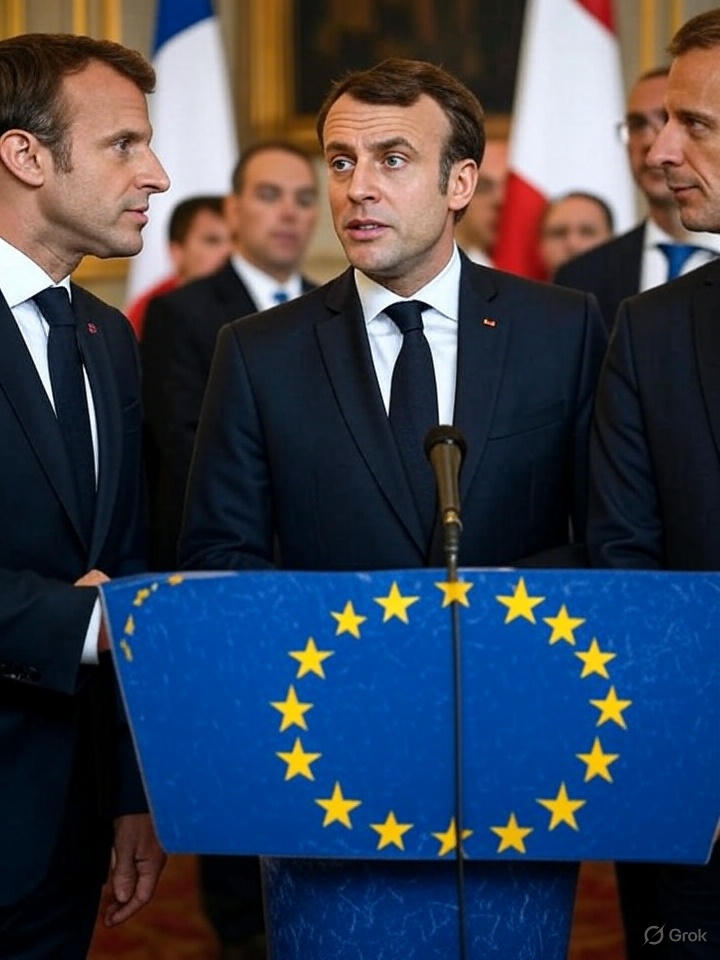France’s snap legislative election in July 2024 produced a fractured parliament: the left wing New Popular Front (NFP) emerged as the largest bloc but fell short of a majority, prompting political stalemate. President Emmanuel Macron has been negotiating with moderate forces including his centrist Ensemble coalition and select left factions to form a governing alliance and block the far right National Rally (RN).(Globedge)
NFP Triumphs, But Lacks Majority
The NFP a coalition of La France Insoumise (LFI), the Socialist Party (PS), Greens (EELV), Communists, and other left wing groups secured between 180 and 188 seats in the 577 member National Assembly, becoming the biggest bloc but well short of the 289 seat majority threshold. Macron’s centrist Ensemble ran second with 159–168 seats, while the RN took 142–143 seats.(Al Jazeera)
Why It Matters: Hung Parliament
With no alliance holding an absolute majority, the French legislature entered a hung parliament, raising the specter of prolonged legislative paralysis. A failed consensus could derail essential budget plans and block key reforms.(Wikipedia)
Macron’s Strategy: Coalition Without the Extremes
Macron has explicitly ruled out forming a government with either the far left LFI or the far‑right RN. Instead, he is actively pursuing an alliance composed of centrists, moderate Socialists, Greens, and segments of the left willing to collaborate a so called “government of national interest.”(Al Jazeera)
These talks aim to build a non aggression pact or voting alignment sufficient to survive confidence votes and pass legislation, without giving veto power to Marine Le Pen’s RN.(The Times)
Fractures Within the Left
The NFP alliance, though electorally powerful, quickly revealed internal fault lines. LFI suspended cooperation with PS and Greens over disagreements on the prime ministerial candidate selection, stalling the coalition process early on.(The Guardian)
When the alliance nominated Lucie Castets, a relatively unknown civil servant, as their PM candidate, Macron rejected her appointment emphasizing that without broader support, the government would be unstable.(Al Jazeera)
Political Crisis Intensifies
Deadlock persisted for weeks. Macron accepted the resignation of then Prime Minister Gabriel Attal in mid July, but continued directing negotiations. The left demanded that the electoral outcome be honored constitutionally; Macron insisted on a broader, cross bloc consensus.(Al Jazeera)
When the NFP failed to propose a viable majority, and the far‑right RN and hard left refused to cooperate, France risked recurring no confidence votes and institutional breakdown. Conservation actors argued that Macron’s approach undermined democratic norms by sidelining the largest bloc.(Le Monde.fr)

Temporary Government Formed Bayrou Takes Charge
In September 2024, Macron appointed Michel Barnier, a centre right figure from Les Républicains, as prime minister. Barnier formed a minority cabinet with Macron’s centrists and conservatives. However, conflict erupted quickly: both the NFP and RN filed motions of no confidence over Barnier’s policy direction.(Financial Times)
After just three months, Barnier’s government collapsed under a no-confidence vote in December 2024. Macron then designated François Bayrou, a veteran centrist, as prime minister to shepherd France through another phase of fragile minority governance.(The Wall Street Journal)
Bayrou’s administration faced immediate pressure to pass the 2025 budget, amid a public deficit projected at more than 5–6% of GDP and investor anxiety over political instability.(The Wall Street Journal)
Broader Implications
France’s political landscape shifted dramatically: the traditional center right Les Républicains stayed in opposition, the far‑right RN became the third-largest faction, and governing authority fragmented across multiple blocs. Analysts warned that without a robust coalition, the Assembly remained vulnerable to policy paralysis.(Deutsche Welle)
The unresolved crisis raised questions about France’s ability to pass major economic reforms, manage the Paris Olympics smoothly, and contain soaring debt. Some commentators suggested adopting temporary technocratic government models or holding new elections though French law forbids a fresh vote until a year after the last.(The New Yorker)
Summary Table
| Bloc / Alliance | Seats | Majority? | Stance Toward Alliance |
|---|---|---|---|
| New Popular Front (NFP) | ~180–188 | No | Won plurality; fragmented internally |
| Ensemble (Centrist Macron) | ~159–168 | No | Negotiating with moderates, excluding extremes |
| National Rally (RN) | ~142–143 | No | Excluded; holds influential swing power |
France remains in a state of political flux. The NFP’s plurality has not translated into governance authority. President Macron’s attempts to build centrist left alliances to the exclusion of the extremes reflect both strategic caution and the complexity of a fragmented legislature. Until a durable coalition forms, France may continue navigating governance through caretaker administrations and fragile parliamentary compromises.(The Guardian)

